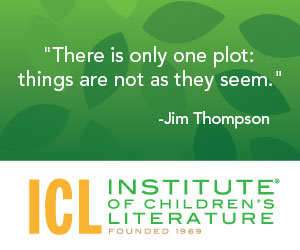1000 N. West Street #1200, Wilmington, DE 19801
© 2024 Direct Learning Systems, Inc. All rights reserved.


If you’re like most people, as soon as you think about writing something nonfiction, you think about writing an animal book. Kids do love animal books and animal nonfiction, but because kids love them, there are many, many animal books already in print and many more in the slush pile waiting for editors to read them. So to write animal nonfiction, you’re going to (1) compete with many other writers and (2) need to be able to say what sets your animal book apart from all the others. The second part of that is challenging but not impossible, so if writing animal nonfiction is your thing, don’t feel like I’m raining on your parade. Just be aware that you will need to come up with an idea that sets you apart from all the other animal nonfiction books.
How do you come up with a unique idea? Sometimes the answer is in specificity. There may be many books on dogs, for instance, but if your book was specifically on how dogs were domesticated (including some recent research on animal domestication) then you’d have a book that would stand out. Or maybe your book is on dog heroes, telling narrative nonfiction stories of specific dogs that have saved lives (this topic has been done a good bit, but it really never gets old because it combines nonfiction with storytelling as you tell the story of these animal heroes). Or maybe your book is about dogs in space. Getting more specific is often a way to come up with a unique idea in a crowded field.
Right now, the hot thing in kid’s nonfiction is STEAM (science, technology, engineering, arts, and math). Now, animal books do fall under the heading of science, but since there are so many animal books, it’s worthwhile to look at other options. One area where publishers often go begging is engineering. Engineering books can cover many different topics. An engineering book might basically be a collection of projects, such as learning to build a tiny town from recycled materials. An engineering book might be a narrative about how engineers solved a huge problem (like the story of the Big Dig in Boston). An engineering book might look at the life of a specific, quirky engineer (this may take some hunting since if you’re going to do a biography, you need someone who both did interesting things and was an interesting person.)
Another STEM subject that comes up over and over on “wish lists” for publishers is earth science. Compared to natural science (where animal books fall), earth science books are hugely under-represented and mostly fall into a couple of subjects: water cycle, volcanoes and storms. The water cycle is popular because it’s relatively easy to explain and lends itself to a lot of illustrations. Volcanoes and storms borrow their popularity from the drama of such huge elemental forces. But earth science is a much larger field of study and could result in some fascinating books. And it’s an area that teachers and librarians turn to publishers and ask for more books.
But how do you find an interesting earth science topic? As with animal topics, the answer can sometimes be to look very closely at a specific area. For instance, you might choose to write about the Aquarius Reef Base, an underwater habitat off Key Largo, Florida. The lab allowed researchers to deep dive over a number of days without the dangers of coming to the surface over and over. The researchers could simply live in this lab that was 62 feet below the surface. Writing about that topic could look at the needs of such a lab. It could look at the way the researchers had to adapt to living in a place where you couldn’t just dash out for extra food or water or air. So it could be both facts and nonfiction storytelling.
Nonfiction is full of stories, and narrative nonfiction is very much about storytelling. You’re simply telling your story through facts and research. After seeing a museum exhibit on Matthew Henson, I very much wanted to know the man’s story. So I checked out piles of books on Henson and on arctic exploring. For a month, I read about these men and the incredible conditions they faced over and over again. I read their journals and their letters. I looked at photos. Then I told their story (or a very tiny sliver of it) for Highlights magazine. It was published in the January 2018 issue. It was the story of their experience that captured my imagination and the story that I ultimately told. I used all the things I knew about how to tell a good story, and I used those things to tell Henson’s story.
We tell true stories all the time. I tell the story of my daughter’s birth. I tell funny stories of my catastrophic attempts to fulfill the P.E. demands of my college. I’ve learned how to hone a story to get the best response from an audience, but they’re still true stories. And though those stories don’t play well beyond my family and friends, I can use the same skills to tell true stories from the lives of other people. I simply need to find a story that interests me, then immerse myself in it until I become as conversant in that story as I am in my own. Then I tell the story. It can be challenging, but in the end, it’s every bit as fulfilling as telling my fictional stories.
So when you’re considering new ideas for what you’ll write this year, don’t push aside the possibility of nonfiction. Kids love it. Editors need it. And it can actually be a lot of fun.
With over 100 books in publication, Jan Fields writes both chapter books for children and mystery novels for adults. She’s also known for a variety of experiences teaching writing, from one session SCBWI events to lengthier Highlights Foundation workshops to these blog posts for the Institute of Children’s Literature. As a former ICL instructor, Jan enjoys equipping writers for success in whatever way she can.
1000 N. West Street #1200, Wilmington, DE 19801
© 2024 Direct Learning Systems, Inc. All rights reserved.
1000 N. West Street #1200, Wilmington, DE 19801
© 2024 Direct Learning Systems, Inc. All rights reserved.
1000 N. West Street #1200, Wilmington, DE 19801
© 2024 Direct Learning Systems, Inc. All rights reserved.
1000 N. West Street #1200, Wilmington, DE 19801
© 2025 Direct Learning Systems, Inc. All rights reserved.
1000 N. West Street #1200, Wilmington, DE 19801
©2025 Direct Learning Systems, Inc. All rights reserved. Privacy Policy.